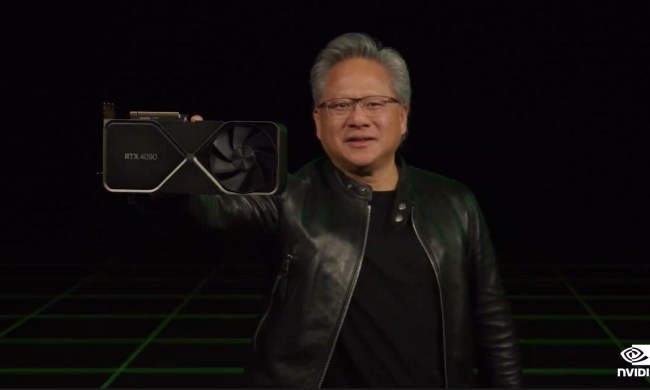
Modders are doing what Nvidia won’t. The team at Teclab put together a Frankenstein graphics card, which it calls the RTX 4090 Super, that was able to beat the RTX 4090 by 13% in benchmarks.
You can’t buy this graphics card, of course, but it’s an interesting look into how splicing together the best components can deliver big performance gains. The heart of the RTX 4090 Super is the RTX 4090 GPU, which is Nvidia’s AD102 die. Teclab changed everything else about the graphics card, though.
For starters, it borrowed the memory modules from an RTX 4080 Super. The RTX 4080 Super actually has faster memory than the stock RTX 4090, which allowed the team at Teclab to reach 26 Gbps speeds on the GDDR6X modules. The stock RTX 4090 uses 21 Gbps modules. This change alone accounted for the 13% jump in performance without any additional overclocking.
That’s just the start, though. Teclab took the AD102 die and placed it on the board of a Galax RTX 3090 Ti HOF OC Lab Edition. The board of this card is not only capable of handling high voltages thanks to to its 28 power stages, but it also comes with dual 16-pin connectors to feed the GPU with more power. Combine that with a high-end water block, and Teclab was able to overclock the GPU and optimize level of detail in the Superposition benchmark, leading to a 40% lead over the stock RTX 4090 in the benchmark.
Although Teclab achieved a score worthy of a top placement on the Superposition leaderboards, you won’t see the result online. With a new board, custom memory, and only the GPU tied back to the RTX 4090, it’s hard to call this an RTX 4090 at all.

It’s an interesting showcase of what Nvidia could have achieved with an RTX 4090 Super, however. At the time when Nvidia introduced its RTX 40-series Super cards, the RTX 4090 was selling for around $2,000. A Super refresh of the RTX 409o running upwards of 13% faster would surely inflate the price even more, which is exactly what we saw with the RTX 4080 Super when it released.
The RTX 4090 Super experiment shows some promise for the next generation of Nvidia GPUs as well. Nvidia’s upcoming RTX 50-series cards are said to come with GDDR7 memory. Micron, the manufacturer of these memory modules, says that they’ll offer up to a 30% performance improvement in games. Even if that 30% number is optimistic, Teclab’s monster RTX 4090 Super shows that memory speed can have a big impact on performance.




